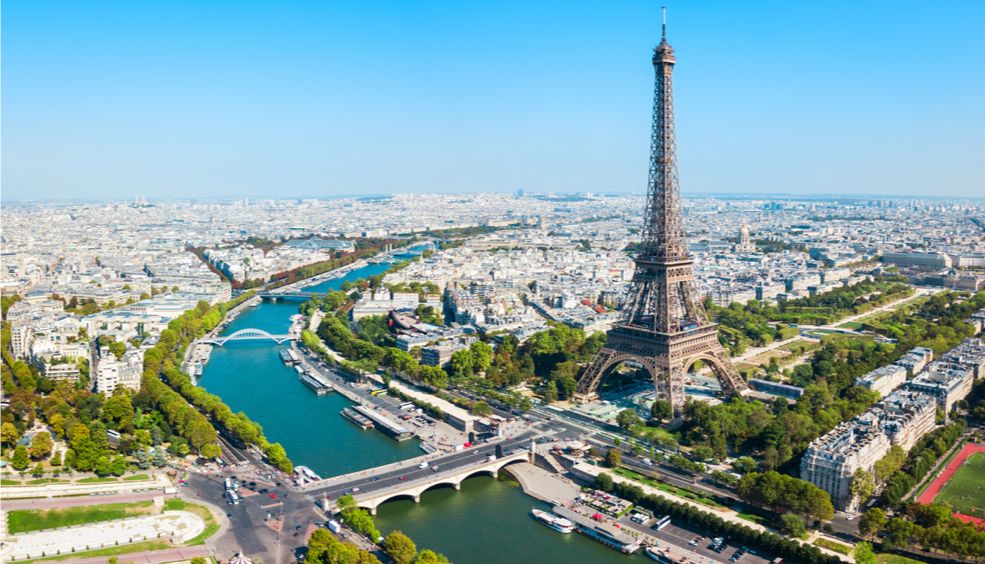Eco-friendly hotels in the Canaries for a holiday in contact with nature
The environment has become a mainstream topic of conversation, and more and more hotels are adopting a philosophy centred around respect for nature. The Canary Islands have also embraced this trend. Here's a list of the top eco-friendly places to stay. If you like nature, then the Canaries are undoubtedly the ideal destination for you.
more infoThese are Vueling’s new routes to Paris-Orly
New routes connecting Paris with Spain, Italy, UK, Denmark, Germany, Norway, Sweden, Ireland, Morocco and Malta, since November 2021.
more infoTop natural pools in the Canary Islands: come and take a dip!
Natural seawater pools have all the benefits of the beach and a swimming pool. There are many of these pools across the Canary Islands and they are simply wonderful.
more infoThe Infiorata di Genzano – a Street Become Artwork
Genzano is a charming town built on one of Rome’s hills. Every year it hosts the Infiorata di Genzano, when its main street, the Via Italo Belardi, is carpeted by 2,000 square metres of enormous tapestries adorned with flowers. This artwork uses up nearly 500,000 petals, flowers and seeds meticulously placed to form intricate pictures inspired by religious themes. It is a collaborative venture involving many of Genzano’s inhabitants. Just as painters have their palette, for the Infiorata, different types of flowers are selected according to each colour – carnations are used for reds, broom for yellows.
For the three-day duration of the festival, the town’s shopkeepers set up their marquees from where they sell the region’s typical food products, such as olive oil or pane casereccio, a famous crunchy bread and one of the most emblematic of local gastronomic products. TheInfiorataremains on the streets until the so-called Spallamento, the moment when the music bands and the town’s children walk over the infiorata, until the whole carpet is trampled underfoot.
The Origin of the Flower Carpets
These colourful flower carpets are laid down in many other towns around the world. Notable examples are the Temps de Flors in Girona and the Alfombras de Sal in Lanzarote. Their origins go back to theCorpus Christicelebrations of the 13th century, when flowers were thrown during the Holy Week procession in Rome, a tradition that then spread to many other Catholic countries. Other towns in Italy also have their own infiorata, but the one in Genzano is the oldest and most famous, dating back to 1778.
The Historical Towns of Castelli Romani
Genzano is one of thirteen historical towns that make up the so-called Castelli Romani (Roman castles), which roughly correspond to the area of Colli Albani (Albanian hills) south-east of Rome. For centuries it has been a favourite spot for well-heeled Romans seeking a more temperate climate, to escape from the often suffocating heat of Rome and also to get away from the city bustle and dense traffic. The towns in the Castelli Romani Regional Park stand out for their medieval and Renaissance buildings and for their excellent wine, the so-called white Frascati. You can taste this wine, accompanied by olives, cheese andporchetta– a roast pork dish with herbs – at the local taverns or fraschette.
Genzano – A Charming Setting
Genzano, like other towns in the Castelli Romani, is set on the external slope of the Lake Nemicrater. Indeed, the volcanic origin of the soil is what endows the grapes used in the wine-making with their excellent quality. Its historic centre has a large number of historical and art vestiges for a town of its comparatively small size, including the Collegiata della Santissima Trinità (Collegiate Church of the Holy Trinity), the Annunziata, the Church of the Cappuccini, and the Sforza Cesarini and Villa degli Antonini palaces. Lake Nemi’s claim to fame is that two of the largest and most luxurious vessels from antiquity were found in the crater – both had belonged to Caligula. For 2,000 years they rested at the bottom of the lake before eventually being salvaged in perfect condition, on account of the mud found caked around them. You will delight in the natural surroundings of the Genzano area, which is ideal for cycling. A bike tour will take you along scenic routes featuring lakes, craters and forests.
If you don’t want to miss this year’s Infiorata di Genzano, prepare your trip to this picturesque Italian town for 13, 14 and 15 June 2015. You will enjoy a spectacular event that draws thousands of visitors. Check out our flights here.
Text by Scanner FM
Images by Fabio | Claudio Vaccaro | supermiagolator | supermiagolator | Malega | Deblu68 | Valerio_D
more info




